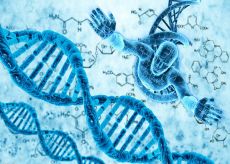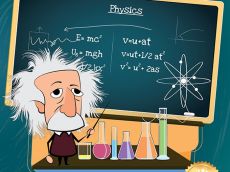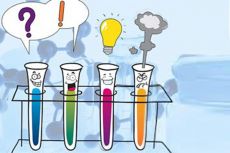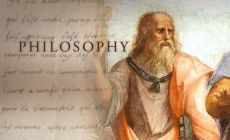Read the following passage and mark the letter A, B, C, or D on your answer sheet to indicate the correct answer to each of the questions from 31 to 35.
Humans have always been searching for quicker and easier ways to get around. About 10,000 years ago, we built canoes made from logs of wood, while on land we started riding horses around 4.000 BC. Roughly 500 years later, we invented the wheel, which led to carts and wagons, and at almost the same time, the Egyptians invented the sailing boat.
Up until the 18th century most people travelled by sailing boat, horse or stagecoach, but in 1769, there was a major breakthrough when the Scottish inventor James Watt invented the steam engine. In 1783, the French inventor Claude de Jouffroy used this to build the first steamboat, and in 1804 the Englishman Richard Trevithick constructed the first steam-powered train. Railways helped carry coal around Britain and were an important part of the Industrial Revolution.
Another major breakthrough came when Karl Benz built the first working car in 1885. Then, in 1903, Orville and Wilbur Wright built the first aeroplane. These two inventions shaped the 20th century. Over time, cars and plane travel became cheaper so that by the 70s a lot of families owned a car and many were holidaying abroad.
Nowadays, companies are developing self-driving cars and we will soon be able to take trips into space. The fascinating story of transportation continues and who knows how we'll be getting around in the future.
(Adapted from On Screen Bl by Jenny Dooley and Virginia Evans)
Câu 31 : What is the passage mainly about?
Hãy suy nghĩ và trả lời câu hỏi trước khi xem đáp án
Lời giải:
Báo saiKiến thức: Đọc hiểu
Giải thích:
Ý chính của bài là gì?
A. Xu hướng phát triển của giao thông vận tải
B. Những thay đổi tích cực đối với giao thông vận tải
C. Các nhà phát minh chính trong giao thông vận tải
D. Tác động của giao thông vận tải theo thời gian
Chọn B
Câu 32 : Which of the following is NOT mentioned in paragraph 1 as early means of transport?
Hãy suy nghĩ và trả lời câu hỏi trước khi xem đáp án
Lời giải:
Báo saiKiến thức: Đọc hiểu
Giải thích:
Cái nào sau đây KHÔNG được đề cập trong đoạn 1 như là phương tiện giao thông thời kỳ đầu?
A. wagons (n): toa xe
B. canoes (n): ca nô
C. horses (n): ngựa
D. trains (n): tàu hỏa
Thông tin: About 10,000 years ago, we built canoes made from logs of wood, while on land we started riding horses around 4.000 BC. Roughly 500 years later, we invented the wheel, which led to carts and wagons, and at almost the same time, the Egyptians invented the sailing boat.
Tạm dịch: Khoảng 10.000 năm trước, chúng ta đã chế tạo ca nô làm từ các khúc gỗ, trong khi trên mặt đất, chúng ta bắt đầu cưỡi ngựa vào khoảng 4.000 năm trước Công nguyên. Khoảng 500 năm sau, chúng ta đã phát minh ra bánh xe, từ đó phát minh ra xe đẩy và toa xe, và gần như cùng lúc đó, người Ai Cập đã phát minh ra thuyền buồm.
Chọn D
Câu 33 : The word "this” in paragraph 2 refers to __________
Hãy suy nghĩ và trả lời câu hỏi trước khi xem đáp án
Lời giải:
Báo saiKiến thức: Đọc hiểu
Giải thích:
Từ “this” trong đoạn 2 đề cập đến __________
A. steamboat (n): tàu hơi nước
B. steam engine (n): động cơ hơi nước
C. breakthrough (n): đột phá
D. inventor (n): nhà phát minh
Thông tin: Up until the 18th century most people travelled by sailing boat, horse or stagecoach, but in 1769, there was a major breakthrough when the Scottish inventor James Watt invented the steam engine. In 1783, the French inventor Claude de Jouffroy used this to build the first steamboat, and in 1804 the Englishman Richard Trevithick constructed the first steam-powered train.
Tạm dịch: Cho đến thế kỷ 18, hầu hết mọi người đi du lịch bằng thuyền buồm, ngựa hoặc xe ngựa, nhưng vào năm 1769, đã có một bước đột phá lớn khi nhà phát minh người Scotland James Watt phát minh ra động cơ hơi nước. Vào năm 1783, nhà phát minh người Pháp Claude de Jouffroy đã sử dụng nó để chế tạo chiếc tàu chạy bằng hơi nước đầu tiên, và vào năm 1804, một người Anh tên là Richard Trevithick đã chế tạo chiếc tàu chạy bằng hơi nước đầu tiên.
Chọn B
Câu 34 : The word “holidaying“ in paragraph 3 is closest in meaning to ___________
Hãy suy nghĩ và trả lời câu hỏi trước khi xem đáp án
Lời giải:
Báo saiKiến thức: Đọc hiểu
Giải thích:
Từ “holidaying” trong đoạn 3 gần nghĩa nhất với _____
holidaying (V_ing): đi nghỉ mát
A. travelling (V_ing): đi du lịch
B. studying (V_ing): học tập
C. working (V_ing): làm việc
D. exercising (V_ing): tập thể dục
⇔ holidaying = travelling
Chọn A
Câu 35 : According to the passage, most of the breakthroughs in transportation came _____________
Hãy suy nghĩ và trả lời câu hỏi trước khi xem đáp án
Lời giải:
Báo saiKiến thức: Đọc hiểu
Giải thích:
Theo đoạn văn, hầu hết các đột phá trong giao thông vận tải đến _____________
A. sau thế kỷ 20
B. hơn 10.000 năm trước
C. trước thế kỷ 19
D. từ thế kỷ 18 trở đi
Thông tin: - Up until the 18th century most people travelled by sailing boat, horse or stagecoach, but in 1769, there was a major breakthrough when the Scottish inventor James Watt invented the steam engine. In 1783, the French inventor Claude de Jouffroy used this to build the first steamboat, and in 1804 the Englishman Richard Trevithick constructed the first steam-powered train.
- Another major breakthrough came when Karl Benz built the first working car in 1885. Then, in 1903, Orville and Wilbur Wright built the first aeroplane.
Tạm dịch: - Cho đến thế kỷ 18, hầu hết mọi người đi du lịch bằng thuyền buồm, ngựa hoặc xe ngựa, nhưng vào năm 1769, đã có một bước đột phá lớn khi nhà phát minh người Scotland James Watt phát minh ra động cơ hơi nước. Vào năm 1783, nhà phát minh người Pháp Claude de Jouffroy đã sử dụng nó để chế tạo chiếc tàu chạy bằng hơi nước đầu tiên, và vào năm 1804, một người Anh tên là Richard Trevithick đã chế tạo chiếc tàu chạy bằng hơi nước đầu tiên.
- Một bước đột phá lớn khác xảy ra khi Karl Benz chế tạo chiếc ô tô hoạt động đầu tiên vào năm 1885. Sau đó, vào năm 1903, Orville và Wilbur Wright đã chế tạo chiếc máy bay đầu tiên.
Chọn D
Đề thi giữa HK1 môn Tiếng Anh 12 năm 2023-2024
Trường THPT Trần Quang Khải














